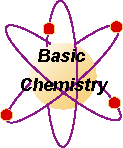

Day 1: Over the base material, pour two tablespoons of water, two of table salt (iodized or plain) and two of Bluing. You'll need some Liquid Bluing which you can likely find in the laundry soap area of your local supermarket. It's a useful product to have around anyway.
Day 2: Add two more tablespoons of salt.
Day 3: Pour into the bottom of the bowl (not directly on the base material) two tablespoons each of salt, water, and Bluing, and then add a few drops of mercurochrome, vegetable coloring or ink to each piece.
By this time a beautiful flower-like growth should have appeared. If all the conditions are not ideal, it may be necessary to add two tablespoons of household ammonia to aid the growth. A free circulation of air is necessary, and these formations will develop better where the air is dry.
To keep it growing: Add more Bluing, salt and water from time to time. It will "bloom" indefinitely into beautiful rosebuds, coral and crystal. Try it!
Table salt (NaCi) can be dissolved in water. The amount of salt in a particular quantity of water depends on its temperature - more being soluble in warmer water. The oceans of the world contain about 5% salt, but lakes such as The Great Salt Lake or the Dead Sea have salts to about 25%.
People who live near the ocean often transfer sea water to open pools where evaporation can take place. This is still done in the Hawaiian Islands where there is an extended dry season. To a greater extent, such pools are formed by low dikes west of the Great Salt Lake in Utah and pumps lift the lake water in substantial quantities.
As water evaporates, some of the salt cannot be retained and crystals of salt form along the edges of the pools and finally when all the water is gone there will be crystals on the bottom of the dried pool. These need only purification to be used as table salt.
The recipe for the Salt Crystal Garden calls for proportionately large amounts of salt in the presence of little liquid. Thus crystallization takes place very quickly.
Bluing is a colloidal suspension of extremely minute particles of blue powder (Ferric Hexacyanoferrate). This is not a solution in the true chemical meaning of that word.
As the water from the bluing and the clear water which is first added evaporate, two things happen. The blue particles can no longer be supported and the excess salt cannot stay in solution. The salt crystallization process will take place around the blue particles as nuclei, in much the same way as silver iodide cloud seeding accelerates the formation of rain drops.
Small amounts of ammonia are added chiefly to speed up the evaporation process.
The purpose of the porous material (sponge pieces) is to provide a means for capillary action to carry the liquid containing bluing and salt up from the main source of liquid. This further speeds up evaporation and causes the crystals to form over a larger area than just the rim of the bowl.
Additions of bluing and salt on later days should be made by slipping the new liquid in below the rest of the growth. Capillary action will bring this further material up where the evaporation can cause additional formations of crystals.
No chemical reaction takes place in this process, just dissolving and recrystallization aided by the bluing particles.

